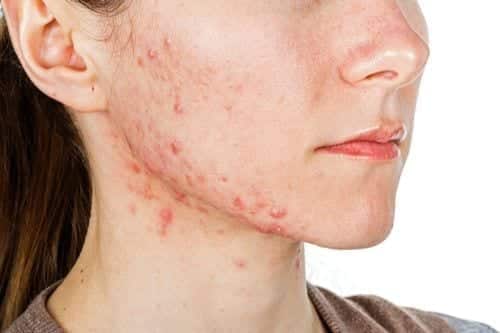
This post discusses SSA Disability Benefits for skin disorders. If you or someone you love has been assessed with a disabling skin disorder read on for how the SSA will evaluate your claim for disability.
Skin disorders can range from a mild nuisance to severely disabling. Having a skin disorder alone is not enough to qualify you for disability benefits: what matters is the severity and effect your skin disorder has on your life. Some examples of disabling skin disorders that I have seen in my practice are Epidermolysis bullosa, burns, infections caused from autoimmune disorders and even psoriasis.
The Social Security Administration has a listing specifically for Skin Disorders, 8.00. The beginning of this listing describes what evidence is needed and how severity is determined. Extensive lesions, frequency of flares, symptoms, pain and treatment are all considerations. In addition, if your skin disorder is the result of some other impairment, you will be evaluated under that body system first. (For example, if you have been assessed with HIV and have a resulting skin disorder, you will be evaluated under 14.08 HIV Infection first.)
Epidermolysis bullosa is a group of skin conditions whose hallmark is blistering in response to minor injury, heat, or friction from rubbing, scratching or adhesive tape. Via The Mayo Clinic. During a severe flare, the mildest skin irritation can cause severe blistering. Other symptoms I have seen are loss of fingernails, toenails and severe itching during the healing process with possibly serious infection. You can have lesions from EB on the inside of your body as well. Listing 8.03, Bullous Disease, requires extensive lesions that persist for at least 3 months despite following prescribed treatment. EB is also hereditary.
Burns are broken down into degrees, with third-degree burns extending deep into tissues and fourth-degree burns going to the bone/muscle. Found here. These type of burns take substantial time to heal, are very painful and skin grafts may be needed. When you start to heal, the itching can be unbearable. Listing 8.08 Burns, requires extensive skin lesions that have lasted or are expected to last for a continuous period of 12 months.
Psoriasis is the most common autoimmune disorder in the U.S. It occurs when the immune system sends out faulty signals that speed up the growth cycle of skin cells. Via National Psoriasis Foundation. As the new growth of skin cells moves to the surface of the skin, thick, itchy and tender patches appear called plaque. Found here. Psoriasis is evaluated under 8.05, Dermatitis. This listing requires extensive skin lesions that persist for at least 3 months despite continuing treatment as prescribed. Also read our post on Hidradenitis suppurativa.
Again, just having a skin disorder does not automatically make you disabled. But, if your skin disorder is severe, you may be eligible for Social Security Disability Benefits. If your skin disorder has progressed to the point that you are unable to work, apply for Social Security Disability as soon as possible and call the Bishop Law Firm. We want to help!
Resources:
- https://www.disabilitylawfirmnc.com/social-security-disability/?swcfpc=1#Types_of_Social_Security_Disability_Benefits
- http://www.ssa.gov/disability/professionals/bluebook/8.00-Skin-Adult.htm
- http://www.ssa.gov/disability/professionals/bluebook/14.00-Immune-Adult.htm#14_08
- http://www.mayoclinic.org/diseases-conditions/epidermolysis-bullosa/basics/definition/con-20032497
- http://www.ssa.gov/disability/professionals/bluebook/8.00-Skin-Adult.htm#8_03
- http://umm.edu/health/medical/altmed/condition/burns
- http://www.ssa.gov/disability/professionals/bluebook/8.00-Skin-Adult.htm#8_08
- https://www.psoriasis.org/psoriasis
- https://www.webmd.com/skin-problems-and-treatments/psoriasis/understanding-psoriasis-basics
- http://www.ssa.gov/disability/professionals/bluebook/8.00-Skin-Adult.htm#8_05
- https://www.disabilitylawfirmnc.com/apply-for-social-security-disability-benefits-in-raleigh-cary-and-durham/

